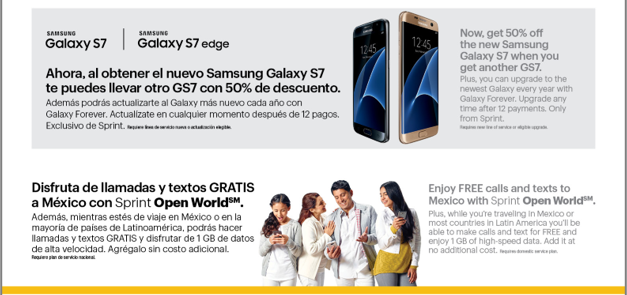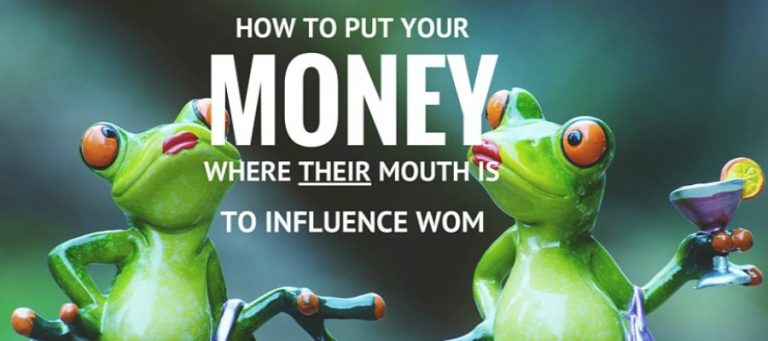Understanding Bilingual Advertising Targeting Hispanic Audiences

From touching college TV spots to “rebellious” car commercials, ads targeting Hispanics, the largest ethnic minority in the US, tend to be colorful, energetic, and bilingual.
Bilingual advertising has become more prevalent in recent years, driven by several theories. One of the most common suggests[1] that marketing firms aim to reach two very specific groups: the highly acculturated Hispanics , who are English-dominant, and Latinos with a low degree of acculturation who are Spanish-dominant[2].]

Isn’t Spanish Enough?
The Spanish-only approach continues to lose momentum as more evidence reveals that second-generation Hispanics (and subsequent generations) are, in fact, English-dominant. However, first-generation Hispanics tend to be Spanish dominant, especially among immigrants and seniors in multigenerational households. In these households, younger generations serve as “digital Sherpas” for Spanish-dominant family members. So, bilingual advertising can be used strategically by marketers to reach and nurture multigenerational households.

Research conducted by ThinkNow and 9th Wonder finds younger generations show appreciation for brands that empower their Spanish-dominant relatives with clear and relevant information, thus aiding their decision-making process:
By lifting the burden of translation from the shoulders of the family’s go-to shopper, brands will create a positive experience for both the shopper and the end consumer. Your brand will gain potential revenue – loyal fans.
There are also possible drawbacks to dual-language ads. If not carefully executed, “an English/Spanish/Spanglish mix of language in an ad can be confusing and irritating to viewers,” says Roy Kokoyachuk, co-founder and principal of ThinkNow. For brand marketers, weighing the pros and cons of bilingual advertising comes with the job. Using resources like market research to test your theories and avoid making biased assumptions is essential to developing ads that resonate with intended audiences.
Bilingual Advertising Distribution Channels
Professor William Wells, a former, award-winning journalism professor at the University of Minnesota, explains that “a fundamental principle behind media planning in advertising is that the advertisement should fit with the chosen media vehicle.”
Let’s apply this principle to bilingual advertising. Below are a few best practices to consider depending on the intended distribution channel.
Bilingual Newsletters
An effective bilingual email strategy involves more than translating copy from English into Spanish. It captures the cultural nuances important to the email recipient.
Recently, one of our partners at The Translation Team received a nicely targeted newsletter from Audible. While the copy is in English, there is a wink of Spanish present. This implies that Audible fully understands what’s important to Joshua.

Bilingual TV Commercials
TV commercials present good opportunities to reach broader audiences with fun and engaging content. Wendy’s targeted Hispanics with its “El Efecto BOGO” (The Bogo Effect) bilingual ad, a spin on an English concept, “Buy One. Get One.”, across a 15-second Spanish voice-over spot.

Wendy’s also consciously translates the legal disclaimer into Spanish to ensure terms and conditions are accessible to bilingual and Spanish-dominant consumers.
How did Wendy’s know that Hispanic viewers would get the “BOGO” reference? Latinos in the U.S., whether fluent in English or not, are immersed in American culture. They regularly encounter these terms and can identify the concept. This notion is confirmed by market research and ad testing prior to the campaign’s launch.
Bilingual Printed Materials
Although content is shifting from print to digital, printed materials are still prevalent. It’s common for distributing information like pricing, benefits, and terms and conditions. This is especially helpful to those unfamiliar with the dominant language.
Bilingual materials help make content more accessible and portable, ensuring materials make it home to Spanish dominant loved ones.

Instead of creating two separate pieces in each language, Sprint structured the layout to accommodate additional content without sacrificing readability or aesthetics.

Another approach to bilingual printed materials highlights the target’s preferred communication language while providing an additional language option. In this example from Sprint, the preferred language is Spanish and the alternative is English. Notice the differences in both color and font size. The black text is dominant, and the gray text is secondary.
Total Market Approach
In 2014, the Culture Marketing Council and several diverse partners set out to redefine the “Total Market” approach to advertising. The recommendation – include “strategies that are culturally nuanced, PLUS dedicated segment strategies.”
Bilingual advertising is just one of many marketing strategies used to integrate culturally relevant elements. The Toyota’s Camry spot referenced at the beginning of this article uses English and Spanish to address the Hispanic segment. The narration, terms and conditions, and promotional copy are in Spanish, while the car’s interface is English. The ad also picks up elements common to the total market, like family dynamics. The mom calls the son while he’s driving and the son declines the call.
The campaign appeals to various groups, including Spanish dominant, bilingual, and English-only consumers. All will take away from the ad that the Toyota Camry is fast, cool, and liberating.
Promotes Greater Diversity
Consumers’ appetite for greater diversity in advertising is growing. Gen Z is the first majority-minority generation and has grown up in a cross-cultural environment. Bilingual advertising is just one way brands integrate more diversity and inclusion into advertising. It also assists with building relationships with multi-generational households and cross-cultural communities.
Content written in partnership with The Translation Team
[1] Callow, M. and Mcdonald, C. (2005) ‘The “Spanglification” of Advertising Campaigns in Hispanic Media? A Comparison of Approaches in Spanishâ€only and Dual Language Magazines’, Journal of Marketing Communications, 11, pp. 283–295. DOI: 10.1080/0144619052000345619.
[2] Read more on why there are different ethnonyms associated with this minority group.





